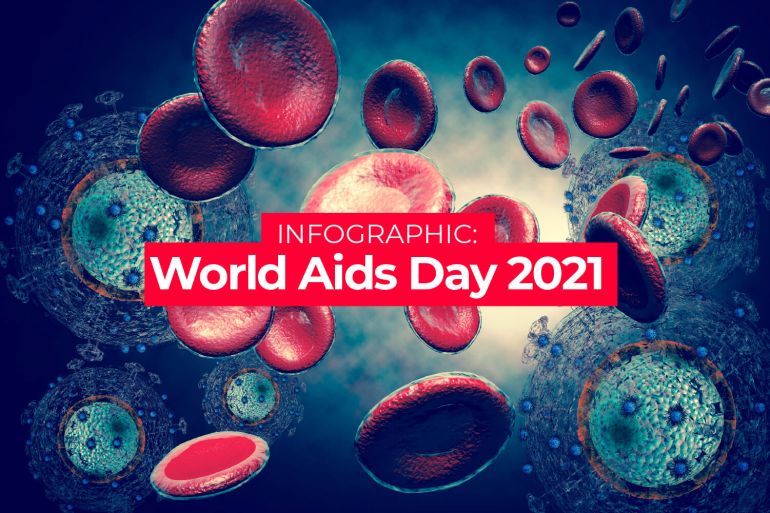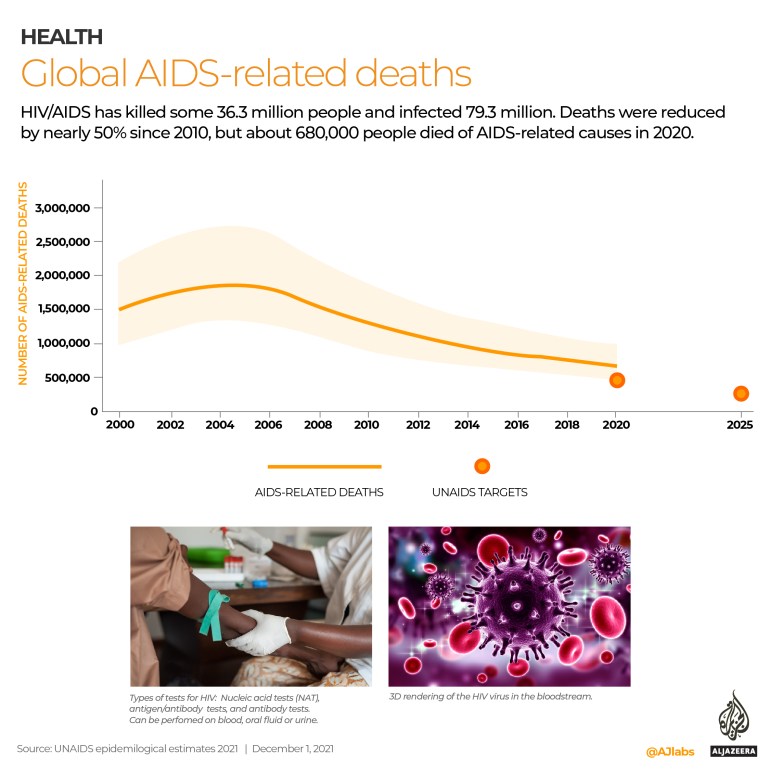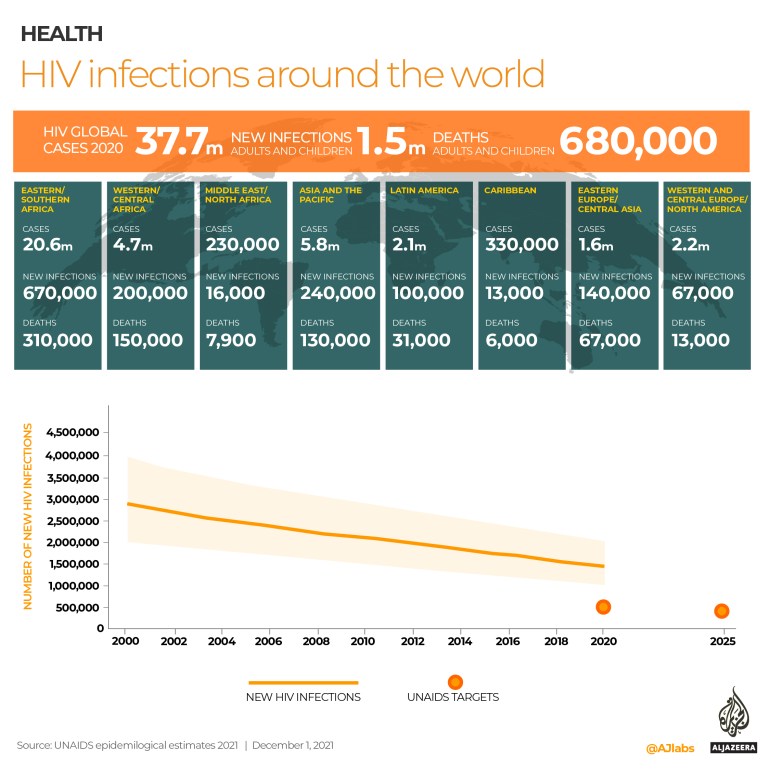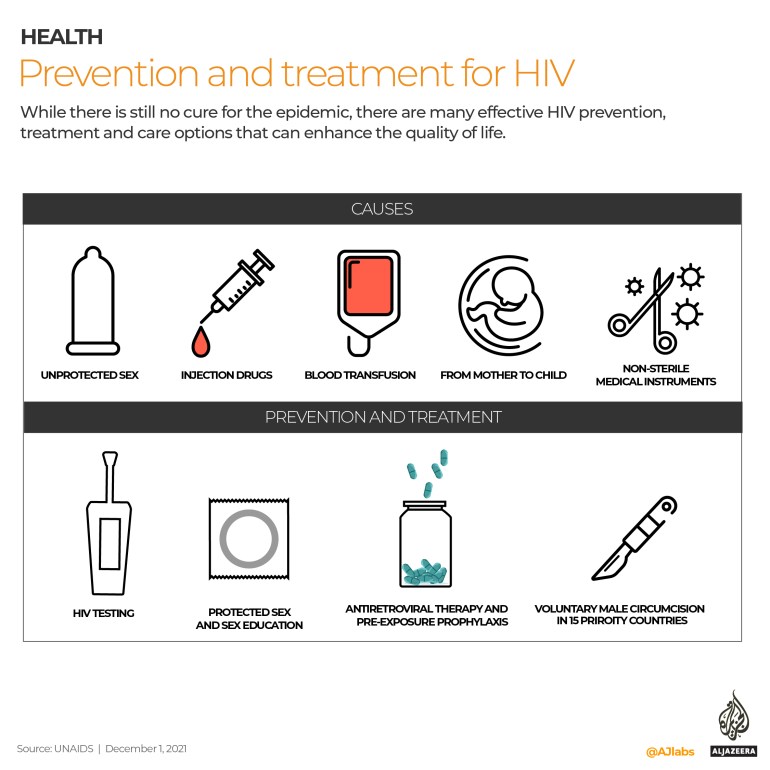Infographic: World AIDS Day 2021
Although AIDS-related deaths have declined in recent years, the epidemic still killed 680,000 people in 2020.

2021 marks 40 years since AIDS was discovered in 1981.
Acquired immunodeficiency syndrome (AIDS) is a chronic and potentially life-threatening condition caused by the human immunodeficiency virus (HIV).
Keep reading
list of 3 itemsArchives of beauty and pain: A century of African women in photos
Photos: Poverty worsens HIV outbreak among Pakistani children
HIV attacks the immune system, weakening it to the point where it cannot fight infections.
According to UNAIDS, there were 37.7 million people living with HIV around the world as of 2020.
Some 1.5 million people were infected with HIV in 2020 according to the World Health Organization (WHO).
World AIDS Day, commemorated annually on December 1, is dedicated to raising awareness of the AIDS pandemic and mourning those who have died of the disease.
Global HIV/AIDS
HIV/AIDS has killed up to 36.3 million people and infected 79.3 million over the past 40 years.
While deaths have dropped by nearly 50 percent since 2010, some 680,000 people died from AIDS-related illnesses in 2020.
New HIV infections
In 2020, approximately 1.5 million people acquired HIV, with women and girls accounting for about half of new infections. Every week, some 5,000 young women between the ages of 15 and 24 are infected, according to UNAIDS.
More than half of the world’s HIV-positive population (20.6 out of 37.7 million) live in Eastern and Southern Africa. In 2020, the regions had some 670,000 new infections and 310,000 AIDS-related deaths.
In some regions, women who are subjected to physical or sexual violence are 1.5 times more likely to contract HIV. Globally, at least 35 percent of women have been sexually or physically assaulted by an intimate partner, according to the WHO.
A global breakdown of AIDS cases and deaths is presented in the table below.

Prevention and treatment options
UNAIDS has recommended a range of tools and treatments to tackle HIV.
- Sex education
Sex education is vital for young people to understand how to keep themselves safe from sexually transmitted diseases (like AIDS) and avoid unplanned pregnancies.
- Access to antiretroviral therapy
In 2020, at least 27.5 million people received access to antiretroviral therapy (ART) – a treatment that reduces the amount of HIV in the blood (also known as the viral load).
According to UNAIDS, about 800,000 children aged 0–14 years who were living with HIV were not on HIV treatment in 2020.
- Pre-exposure prophylaxis
Pre-exposure prophylaxis (PrEP) entails taking antiretroviral medication prior to possible exposure to HIV. UNAIDS says this has been effective across all populations.
- Policies for voluntary male circumcision
In countries where there are high rates of HIV transmission, voluntary medical male circumcision (VMMC) can help reduce transmission. In 2020, 2.8 million men went through VNMC’s, compared with 4.1 million in 2019 – a drop largely due to COVID-19.

COVID-19 and HIV
The COVID-19 pandemic has disrupted medical services and treatments, meaning many of those living with HIV in the most vulnerable locations have been left without the care they need.
“We know that fewer people have had access to HIV prevention medicines. We also know fewer people were coming for testing for HIV across the world,” Winnie Byanyima, executive director of UNAIDS, said in a news conference on Tuesday.
“We also know the rollout of treatment has slowed and people have been dropping out of treatments and not picking up their medicines.”
In addition, because of their compromised immune systems, those living with HIV have much higher chances of developing comorbidities from COVID-19.
As of November 2021, only 7 percent of people living in Africa had been fully vaccinated against COVID-19, according to Our World in Data.
The map below shows how COVID vaccination rates compare with HIV prevalence.